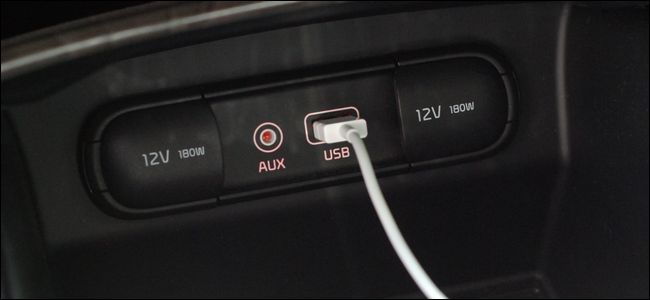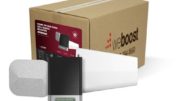It’s great that cars come with USB ports now. It’s an easy way to charge any phone and it’s also a way for your friends to play music through your car stereo without having to permanently pair their phones to your car. (Believe me, this is the voice of experience here, a car full of paired phones is a real pain.)
However, you have probably noticed that if you plug your phone into your car’s USB, it charges SLOW. I mean DEAD SLOW. If you’re using GPS or playing music, the battery might even still be draining if the phone is plugged in. You might not notice on a daily basis if your phone doesn’t drain a lot, but if you’re nursing an older phone and charging it every moment you can, you’ve noticed that plugging into your car doesn’t do a whole lot for you.
There’s a simple reason — the car’s manufacturer just didn’t think things through. A basic USB port supplies 5 volts and 500mA. That’s the bare minimum for the USB standard and it might be enough to power up a hard drive or old-school MP3 player but it doesn’t charge a phone well at all. This is the same problem you’ll often see with cheap phone chargers or charging your phone through an unpowered USB hub.
Believe me, when USB was being designed in about 1995, charging a pocket-sized supercomputer was the last thing anyone was thinking about. Smartphones were over a decade in the future, and USB was thought of as a way to replace bulky printer and modem cables as well as connect keyboards and (eek!) wired mice. So, the original standard only called for half an amp to flow through the cable. After all, why would you need more? In fact, every USB port until 2008 supplied this paltry amount of power. Eventually, PC makers got wise and started pumping up to 5 beefy amps through a USB cable, so as to power tablets and smartphones. Devices that could take that much power were called “fast charging.”
Only problem is, it seems like no one told carmakers that they needed to supply that much juice. A car battery can supply up to 1,000 amps depending on the battery, for a very short period of time. Even over a long time reaching into hours, a car battery can supply up to 8 amps. So why send a measly half an amp to a USB port? First off it’s cheaper to do that, and even cheaper still if there isn’t a circuit that stops the port from drawing power if it’s unused.
Some luxury brands have started offering USB ports that supply the full 2.1 amps needed to fast-charge most devices. Unless the owner’s manual tells you the amp rating of the USB port, though, chances are they don’t. So what can you do?
Good thing there’s a source of 12 volt, 10 amp power available to you all the time, already built into your car! I’m speaking of course of what we used to call the “lighter socket,” which I think is just called the “AUX power outlet” because people don’t smoke in their cars like they used to. This socket has more than enough juice to power your devices and all you need is the right charger.
Choose a 2.1 amp car socket adapter like any of the ones you’ll find here and you’ll be charging like crazy before you know it. As for that built-in USB port, don’t worry, you can probably use it for something else.





